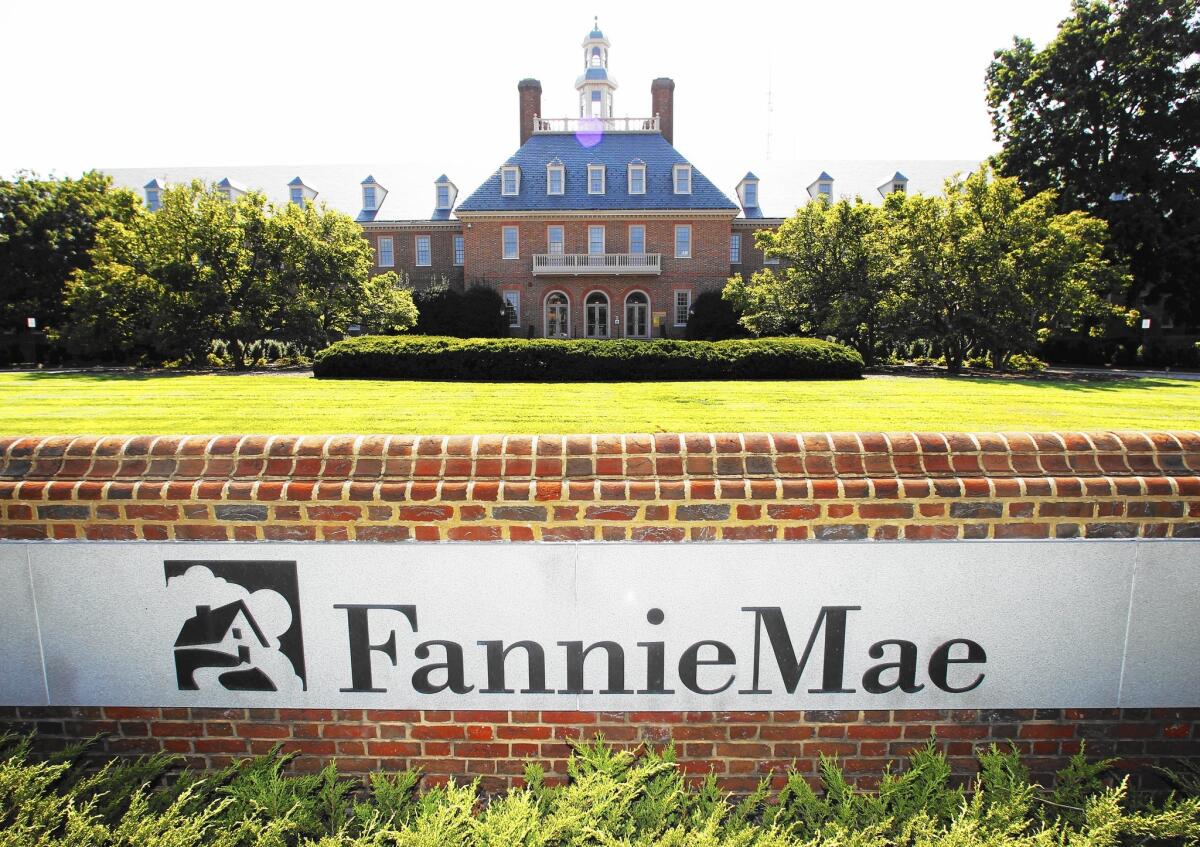Lenders begin easing requirements to get a mortgage

- Share via
Reporting from washington — A closely watched index that tracks mortgage credit availability — lender requirements on credit scores, down payments and other key loan terms — has some good news for potential home buyers: Things are finally loosening up.
After years of progressively tighter rules on borrower eligibility in the wake of the housing bust, banks and mortgage companies have begun modestly easing their requirements and even expanding the types of mortgages they offer. The Mortgage Bankers Assn.’s latest credit availability index reported improvements in all four of its loan categories during January. The improvements mainly reflect positive lender responses to government efforts to ease regulations and improve affordability in the housing market — all of which means an improved environment for mortgage shoppers.
Among the initiatives: giant investor Fannie Mae’s resumption of purchases of conventional mortgages with as little as 3% down. Freddie Mac, another major investor, is planning to begin similar 3% down loan purchases for mortgages closed on or after March 23.
According to Mike Fratantoni, chief economist for the mortgage banker’s group, “roughly 40% of investors” already have begun offering the Fannie 3% down program. The guidelines for the Freddie Mac program are in lenders’ hands and there’s likely to be a strong rollout for it as well.
Also contributing to better affordability: the Federal Housing Administration’s reduction late last month of its costly upfront mortgage insurance premiums, a move that could expand eligibility for home purchases to thousands of buyers, according to industry estimates. Virtually all lenders who work with the FHA program began offering the lower mortgage insurance premiums when the reduction took effect in late January. The FHA insures loans with down payments as low as 3.5%.
Brad Blackwell, executive vice president of Wells Fargo Home Mortgage, the country’s largest-volume mortgage originator, is certain about what’s underway in the market: “Things are looking better for home buyers and refinancers” — not only in terms of underwriting requirements but in the cost of credit as well.
Wells Fargo has been “gradually opening up the credit box,” Blackwell said, in part because of helpful policy clarifications and changes at Fannie Mae and Freddie Mac. Those changes give lenders greater confidence in lending to a broader spectrum of borrowers, including those who don’t have high credit scores and ready cash for big down payments.
For example, he said, although the bank previously had a credit score minimum — 660 FICO on conventional loan applications — now it requires no hard and fast minimum. Instead, if Fannie Mae’s and Freddie Mac’s automated underwriting systems accept the application — say you’ve got a relatively low credit score but strong compensating factors such as solid income, ample reserves and a large-enough down payment — the bank won’t say no to you solely because of the low score.
This could be especially important to people who had tough economic experiences during the recession that damaged their credit but who are now excellent candidates for a loan. On FHA applications, the bank will now accept FICO scores as low as 600, down from its previous 640 standard.
Wells Fargo also has relaxed its policy on gifts to borrowers by relatives and friends to defray part of the down payment and closing costs. On conventional loans with 5% or lower down payments, Wells Fargo previously required borrowers to contribute at least 5% of the total costs from their own financial resources. Now that’s been cut to 3%, which allows for more generous gift assistance.
Some major real estate firms confirm that they are seeing the first signs of credit easing by mortgage lenders, but that most potential first-time and move-up borrowers are not yet aware of the changes.
Joseph Rand, a managing partner of Better Homes and Gardens Rand Realty and an affiliated mortgage company, Rand Commercial Services, in the New York City suburbs, says the improvements are not huge, but “it’s a welcome thing. Loan officers are excited about it.”
Nonetheless, he said, “it’s going to take some time” for the message to get out to renters and others who assume that the rules in the market would still preclude a loan approval.
Bottom line: If you’ve been stuck on the home-buying sidelines, check out what’s going on. Talk to lenders and mortgage brokers. Who knows — maybe the opening of the credit box, even if it’s just a crack, might be enough to help you buy a house at today’s near-historic low rates.
Distributed by Washington Post Writers Group.
More to Read
Inside the business of entertainment
The Wide Shot brings you news, analysis and insights on everything from streaming wars to production — and what it all means for the future.
You may occasionally receive promotional content from the Los Angeles Times.










